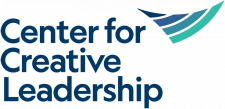- Learning
Time to Scale Leadership Development
CCL experts suggest 5 key considerations for reimagining leadership development for our turbulent times
Talent retention and hybrid working are current workforce concerns. Millennial demands for greater flexibility and meaning at work, flattened management structures with fewer layers in the middle, and the growing importance of inclusivity and diversity also add to the leader’s load. Shareholders are no longer the dominant stakeholders, as performance is now measured by trust, transparency and pro-social behavior, as well as profit. The days of long-term strategic planning are long gone. Rapid market changes driven by digitization and the transformation in the way we work brought by AI demand fast strategic agility.
Successful and effective leaders lead with the head (critical thinking and creativity) and the heart (passion, purpose, and empathy)—inspiring their teams to act the same. Successful companies carry this through common leadership language and behavior across and up and down the organization, dissolving silos and fostering collaboration, connection, and inclusion—all aligned to achieve enterprise goals.
The uncertainty, chaos, and complexity of today’s work environment makes effective leadership more difficult and more stressful than ever—yet there has never been a greater need for it, at all levels in the organizations. Nor a greater need for true enterprise alignment.
In this rapidly changing environment, leadership development becomes a priority—the kind of development that ensures access is equitable, and that leverages innovation in online learning and the reach of digital technology to provide development and skill-building opportunities accessible to all.
With their unrivalled 50-year track record of research and experience-based leadership development, The Center for Creative Leadership (CCL)® is uniquely placed to introduce and explain the new methods of learning required for effective leadership. Their innovative approach is exemplified by the newly launched CCL Passport™. This ground-breaking initiative involves putting the power of CCL’s high-impact development solutions into the hands of their clients’ HR and L&D professionals to enable them to spread learning deep into their organizations—a welcome evolution of CCL’s professed mission to transform as many leaders as possible.
In a recent webinar, CCL experts—Mary Abraham, Senior Director, Programs and Products and Karissa McKenna, Global Portfolio Lead—suggested these 5 key considerations for reimagining leadership development to fit with our current uncertainties:
1. Design learning to be accessible for all
To face today’s challenges, organizations need capable leadership at all levels, aligned across the enterprise, and allowing equitable participation from anywhere. So, handpicking a few senior executives or high-potentials for development just won’t cut it.
Digitization provides an answer. Although it is important to leverage all learning formats, online and virtual formats—by reducing geographic barriers and allowing greater flexibility in terms of time—provide opportunities to invite equal participation from anyone anywhere and so to benefit previously disadvantaged communities.
2. Make it relevant
It is important to build development around the real-world challenges your leaders are facing today and in a rapidly changing future. Relevance should be addressed from 3 perspectives:
i) Personal growth. From self-awareness to upgrading personal leadership capability.
ii) People and task demands. Building the capacity to lead through seemingly overwhelming day-to-day challenges.
iii) Working within a larger system. Working across the organization and with different stakeholders. Developing the ability to lead successfully at all leadership levels.
3 Leverage all learning formats
Face-to-face learning interventions, asynchronous and synchronous/live online learning—each format has its advantages and disadvantages. The quality of the design and delivery is key. The networking and relationship building aspects of face-to-face and the value of ‘in-between’ moments, versus the convenience and time and cost saving of online are obvious trade-offs.
The design of online programs and the ability of educators to deliver them engagingly has advanced significantly in the past 3 years and can be a preference for many. Online will also be the only option for globally diverse or virtual and hybrid teams. Asynchronous—if supported with managers’ buy-in to create time and space—offers the ultimate flexibility of self-paced uninterrupted learning. Live online which provides a guided learning journey today can be as challenging, stimulating and impactful as any other format.
4. Be intentional about every touchpoint
In creating a live online learning journey, it is essential that the focus is on selecting every element to drive learning outcomes in the digital space. It is unnecessary to aim at aligning the new online version to a previous face-to-face design. In fact, CCL having designed and delivered their successful live online Leadership Development Program, were able to take elements that they had learned in the process and retrofit them back into the face-to-face version.
5. Leverage formal, social, and experience-based learning
Taking the famous 70:20:10 ratio for learning—70% comes from experience, 20% from relationships, and 10% from formal education—the key here is to ensure that the 10% of formal development acts as a switch to turn on the light for learning through the other 90%. Furthermore, to build on the formal leadership development there needs to be follow through—access to online support, live follow up sessions, etc.—to help participants benefit from continuous learning resulting from their real-world leadership experiences and connect with others to create sustainable social learning networks.
. . .
In closing the webinar Abraham and McKenna discussed some of the feedback CCL had received from recent participants in their Leadership Development Program. 100% of face-to-face participants would recommend the program to colleagues and they particularly appreciated interacting with their ‘home team’; 99% of online participants would recommend the program—finding it a deeply impactful experience. The positive reception to the online version, where in terms of learning outcome nothing seems to have been lost, is very encouraging and promising for the aim to spread leadership learning as wide as possible.
The innovative new CCL Passport™ has also received a positive reception from clients and has already helped transform many organizational development initiatives into effective, scalable, enterprise-wide programs. Providing unlimited access to CCL’s latest research-based course content and tools, this unique subscription service provides the means to develop a consistent leadership language—customized and contextualized for each organization.
Commenting on her experience of the CCL Passport™, Amy Keyser, SVP of Human Resources at Arch Mortgage Insurance, says: “We selected the Center for Creative Leadership because we thought that they had the best programs and their ratings have been consistently in the top on a global level. CCL trained our team on how to run the program to really make the training relevant and impactful for our employees.”
…………………………………………………………………………………………………………………........
View a full video recording of the original CCL webinar here.
A top-ranked, global provider of leadership development. By leveraging the power of leadership to drive results that matter most to clients, CCL transforms individual leaders, teams, organizations and society.
ARTICLES YOU MIGHT LIKE
VIEWPOINT
For Thomas Misslin, transformation rather than training is the aim of executive education at emlyon business school
DEVELOPING LEADERS QUARTERLY MAGAZINE AND WEEKLY BRIEFING EMAILS


































